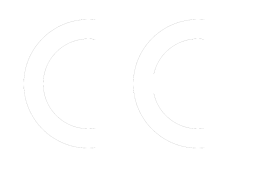FAQ
How is the security of the transmitted data guaranteed?
We receive and transmit data exclusively via encrypted VPN (VirtualPrivateNetwork) connections or the Skalio GmbH data exchange service "TeamBeam", which is certified for data protection. A prerequisite in both cases is that a data processing agreement with jung diagnostics was concluded. In the former case, we provide our customers with a so-called VPN gateway, which makes it very easy to establish a secure connection on the customer side. designed. If desired, the VPN gateway can also be configured so that only anonymized or pseudonymized data leaves the center.
What is a radiological reference center?
In order for the MRI data to be evaluated reliably, minimum standards for data acquisition must be observed. In addition, the inter-scanner variability, which always plays a role in brain volumetric evaluations, must be taken into account. It can be eliminated by a calibration procedure. Without this calibration, patient data, which is stored by different MRI scanners can't be compared. Within the scope of a certification process, acquisition parameters are optimized and scanners calibrated with the aid of a scanner-specific normative database. For the creation of the scanner-specific normative database 3D-T1 datasets of about 30 patients who do not have a neurodegenerative or neuroinflammatory disease and are without neuroradiological findings have to be made available. Only when the certification process has been successfully concluded, the conditions for a reference centre are fulfilled. Only radiological reference centers may use the services of jung diagnostics for patient care in routine operation.
How is the quality of AI-based evaluations guaranteed in routine operation?
Despite the certification process, image or motion artifacts, problems with image acquisition or operating errors may occur during operation. This can lead to errors in the evaluation. If these errors are not detected, diagnoses are made on the basis of incorrect or faulty evaluations. To rule this out, all evaluations are checked by an expert before delivery as part of a quality assurance process. Only technically error-free evaluations are delivered to the customer. This saves the radiologist the tedious quality control process and ensures that the radiologist can concentrate fully on the diagnosis.
How valid are the image-based biomarkers from jung diagnostics?
All biomarkers used in patient care have been evaluated in our own or independent groups' scientific studies, and the results have been published in recognised scientific journals. Our scientific and technical team of experts is available to answer all your questions - be it about quality, questions of content, uncertainties regarding the results, or even the results of a study.
Where are the image-based biomarkers of jung diagnostics used everywhere?
In addition to the continuous use in radiological centers, clinics and prevention centers, the image-based biomarkers of jung diagnostics is also used to evaluate dopamine transporter SPECT data, which is offered by the pharmaceutical company PINAX GmbH (www.easydat.de). Within the framework of pharma-sponsored care projects, approx. 8,000 MS patients in Germany have been treated with biomarker analyses in the past 3 years, supplied by jung diagnostics for the purpose of therapy monitoring.
Why are the results of jung diagnostics additionally quality assured by an expert?
The company jung diagnostics GmbH is a pioneer in the field of development of innovative image-based biomarkers for patient care, such as the early introduction of brain volume measurement or lesion evaluation on MRI of the head. All biomarkers introduced into patient care are approved as medical devices and CE-certified. Despite clinical testing, errors can occur in practice due to movement artifacts, scanner drifts etc., that cannot always be safely excluded. In order to save the user workload and to avoid to take the responsibility for the accuracy of the technical results, jung diagnostics carries out quality control which is performed by human experts and is made according to specially developed quality standards as common in clinical studies. The users receive so from jung diagnostics technically validated results. The user can then transfer these results directly into the diagnostic report.



